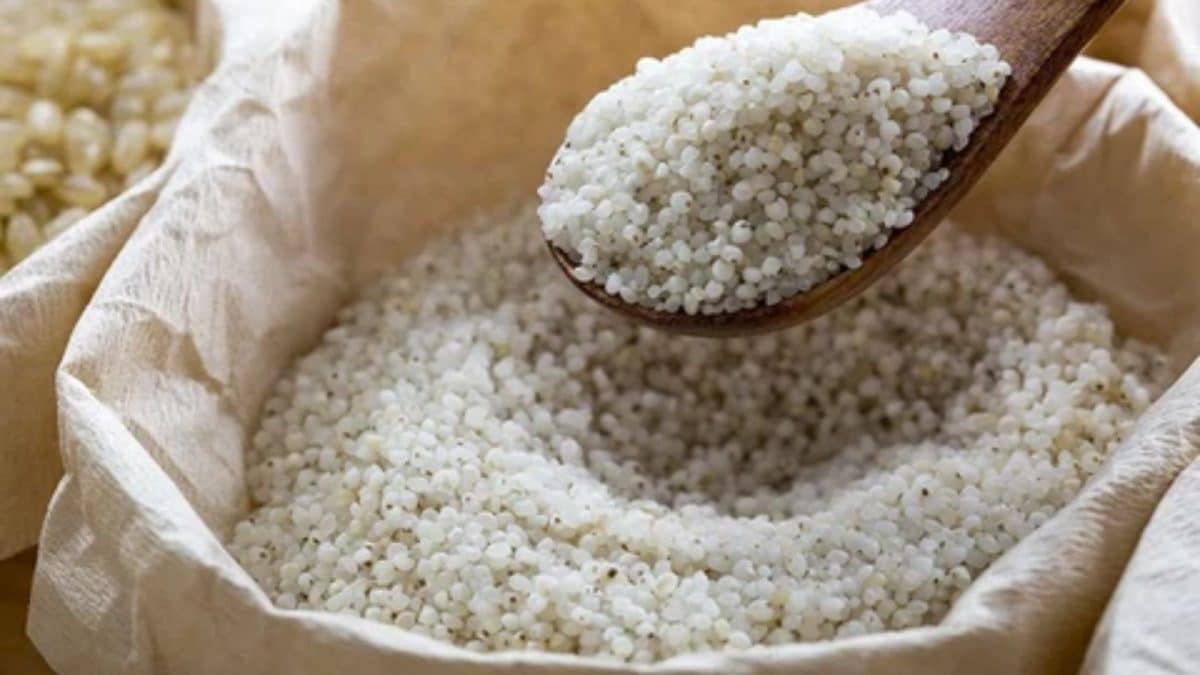Last Updated:
Science may call it a minor millet, but for millions observing Navratri, ‘samak’ remains both nourishment and devotion on a plate

Samak is popular during Navratri for its sattvic properties.
As Navratri unfolds across the country, kitchens are brimming with dishes made from ingredients reserved exclusively for fasting. Among rajgiri, singhade ka aata, kuttu aata, and sabudana, one item often sparks curiosity is ‘samak rice’. Despite being widely called “fasting rice”, samak is neither rice nor a grain in the conventional sense.
Scientifically known as Echinochloa colona, samak belongs to the millet family and is cultivated across hilly and arid terrains of India. It thrives under extreme conditions, resilient to both drought and flood, making it a dependable crop in marginal soils. Known globally as barnyard millet, it is referred to as samak, sanwa, or samaai in different regions of North India.
Light, gluten-free, and packed with protein, iron, and dietary fibre, samak is especially recommended for those with diabetes or digestive ailments. Its sattvic properties, aligned with fasting practices, explain its prevalence in Navratri thalis. From khichdi and pulao to kheer, its culinary versatility ensures that devotees can follow dietary rules without compromising on nutrition.
From an agricultural perspective, samak is classified as a “minor millet”. Yet, in the history of food culture, it has been treated as a substitute grain, deeply intertwined with religious customs. Hindu scriptures consider millets “pure” and suitable for rituals, while rice and wheat – seen as heavy or tamasic – are avoided during fasting.
This distinction is also cultural. In mythology, samak finds mention in the tale of Lord Krishna and Sudama. According to popular lore, Sudama once offered Krishna a humble gift of flattened samak rice, symbolising devotion and simplicity. Believed to date back to the Mahabharata era, this association elevated samak’s status as a fasting staple, sanctified by legend.
India is the largest producer of barnyard millet, with nearly 0.96 lakh hectares under cultivation and an annual output of about 0.73 lakh tonnes. It grows quickly, maturing in just two to two-and-a-half months, and can be cultivated up to 2,700 metres above sea level. Farmers prefer it in low-fertility, rain-fed soils where conventional grains cannot survive.
The sowing season varies: in Tamil Nadu, it is typically planted in September-October or February-March, while in Uttarakhand and the North-East, cultivation begins around April-May. Once harvested, the crop undergoes threshing, sun-drying, and cleaning before being packed in moisture-proof bags for market distribution.
What was once restricted to khichdi and kheer has now found modern adaptations. Today, samak flour is used to make rotis, dosas, and parathas, while processed foods such as papad, biscuits, laddus, and even cakes and muffins are emerging from health-conscious kitchens.
Why then is samak called “rice”? The answer lies in perception rather than botany. In religious texts, grains such as rice and wheat are excluded from fasting diets, while millets are classified closer to fruits or seeds. As a result, samak, though not rice, acquired the label of “fasting rice”, providing devotees with a lighter, permissible substitute.
In truth, samak is not a staple grain, nor is it rice. It is a millet seed, grown in adverse soils, sanctified by faith, and sustained by tradition.
September 29, 2025, 18:54 IST
Read More







